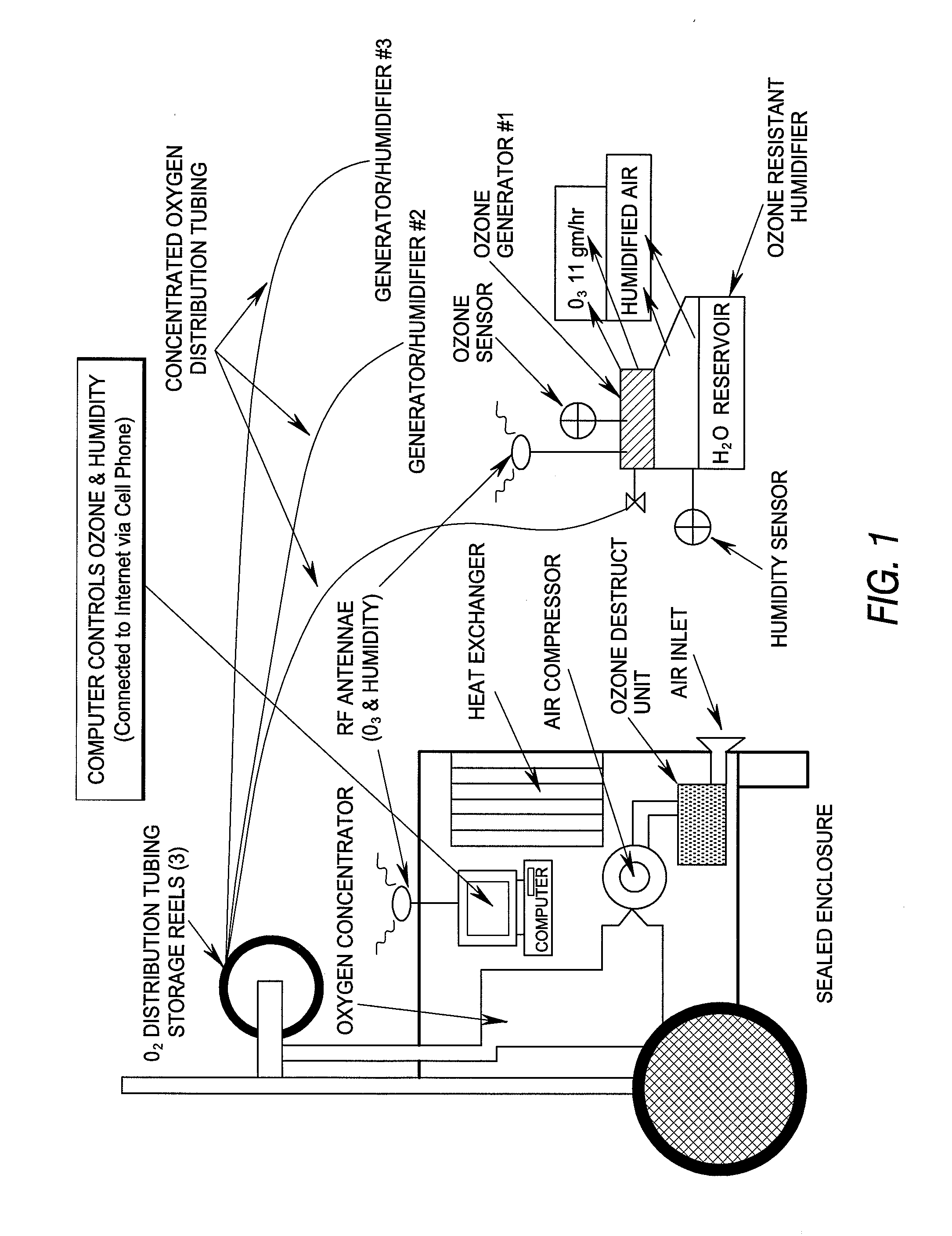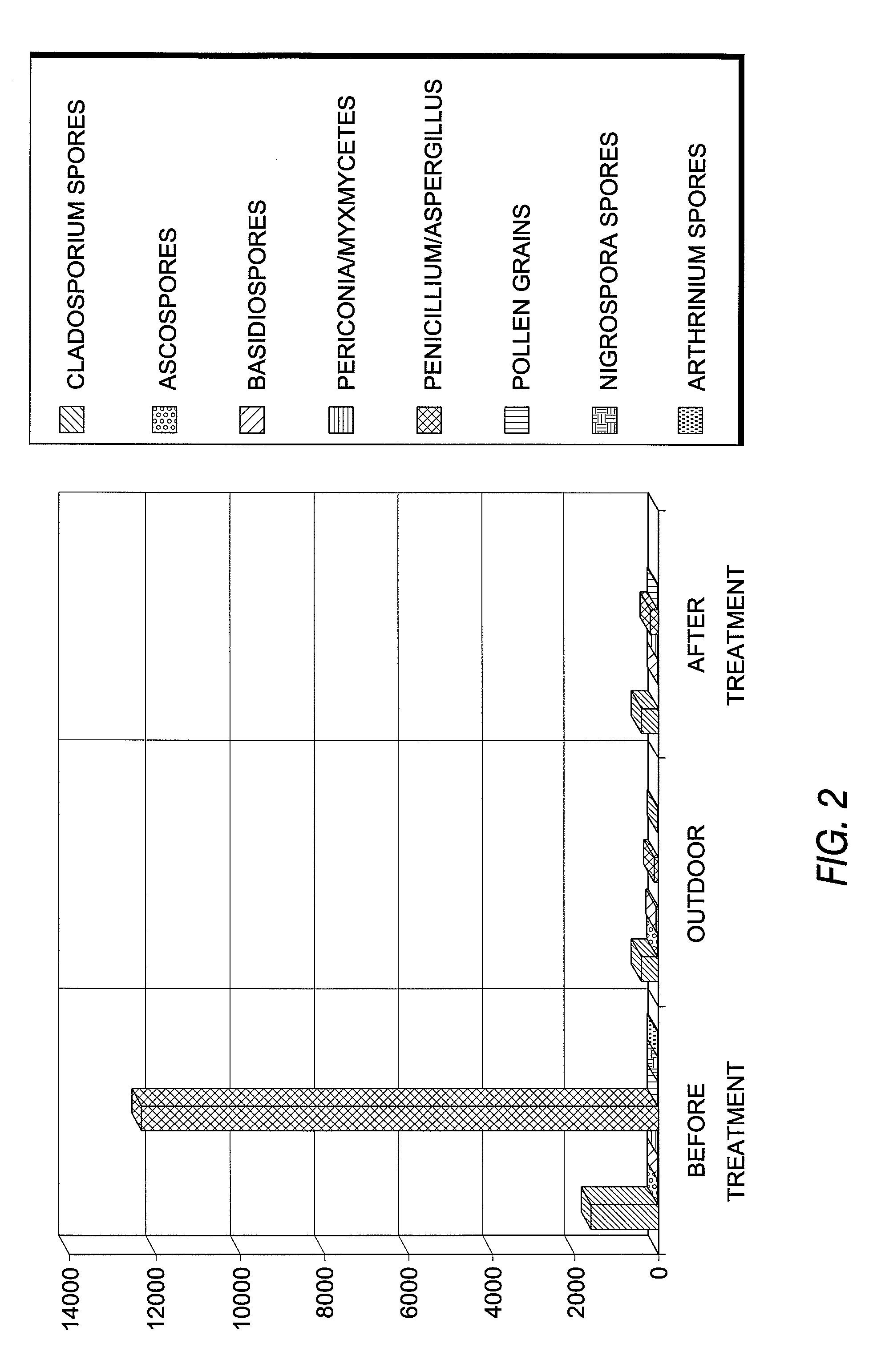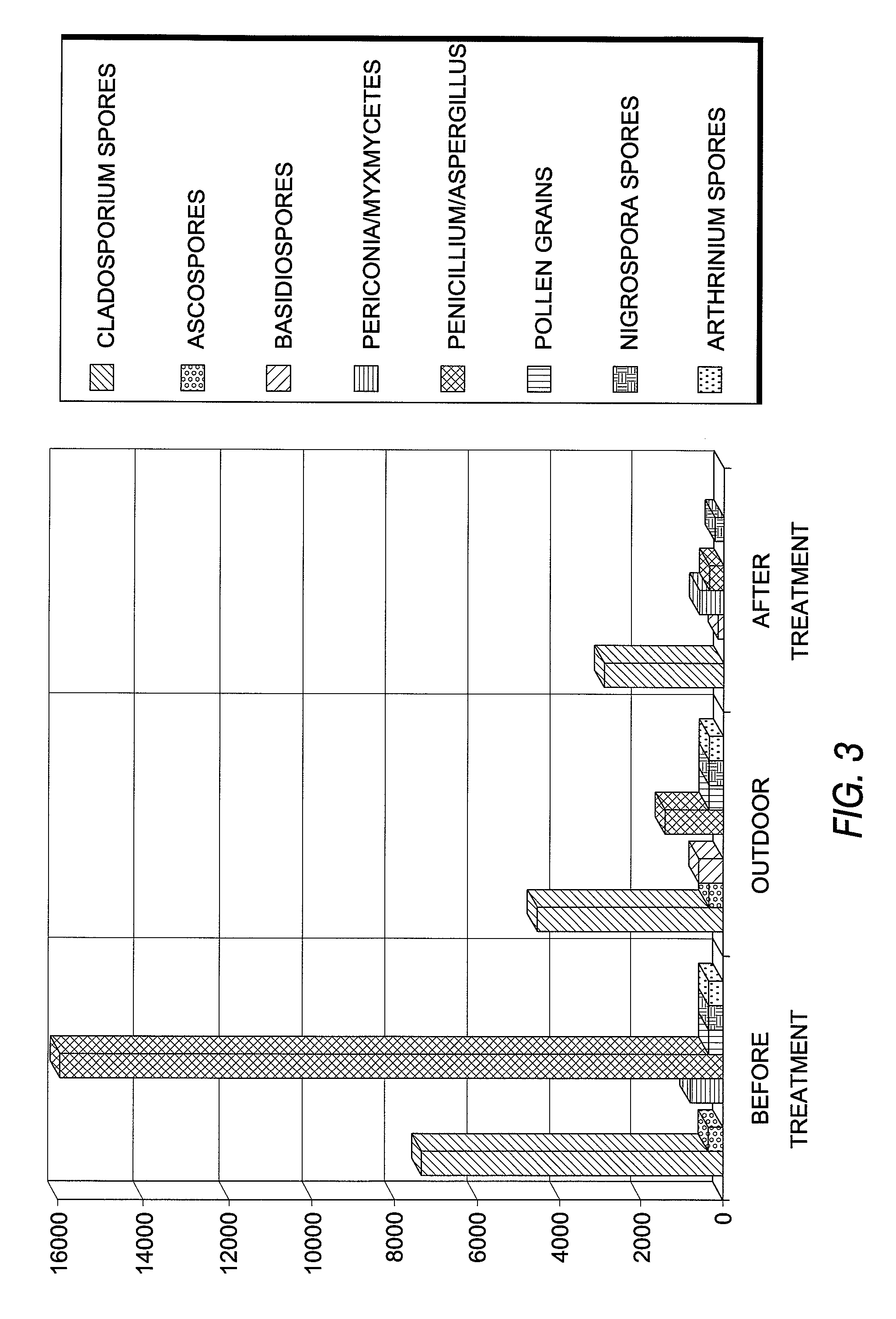Method for abatement of allergens, pathogens and volatile organic compounds
a technology of volatile organic compounds and allergens, applied in the field of methods for abatement of allergens, pathogens and volatile organic compounds, can solve the problems of high instability of ozone molecule, ineffective improvement of indoor air quality of tabletop and room unit ozone generators, and easy reversal back, so as to reduce harmful or undesirable effects, reduce the effect of strength or effectiveness, and minimal disruption
- Summary
- Abstract
- Description
- Claims
- Application Information
AI Technical Summary
Benefits of technology
Problems solved by technology
Method used
Image
Examples
example
[0142] Santa Monica House
[0143] A private residence located in Santa Monica, Calif. was treated with ozone according to a preferred method. A full study of the “before treatment” and “after treatment” conditions in the house was conducted by an independent Indoor Air Quality specialist. The testing portion of the study consisted of taking air samples outside the house to determine background levels of contaminants and in 3 rooms within the house. These tests were conducted on Feb. 14, 2002 (before treatment) and then again on Feb. 21, 2002 (after treatment). The results of the study showed that, in the two bedrooms tested, all types of identified mold spores were reduced below that of the outdoor air (i.e., a 100% kill), while in the dining room the very high levels of Penicillium / Aspergillus (12,339 spores / m3) were reduced by more than 99% while the levels all other fungi types were equal to or below that of the outdoor air (a 100% kill). The graphs provided in FIGS. 2, 3, and 4 p...
PUM
 Login to View More
Login to View More Abstract
Description
Claims
Application Information
 Login to View More
Login to View More - R&D
- Intellectual Property
- Life Sciences
- Materials
- Tech Scout
- Unparalleled Data Quality
- Higher Quality Content
- 60% Fewer Hallucinations
Browse by: Latest US Patents, China's latest patents, Technical Efficacy Thesaurus, Application Domain, Technology Topic, Popular Technical Reports.
© 2025 PatSnap. All rights reserved.Legal|Privacy policy|Modern Slavery Act Transparency Statement|Sitemap|About US| Contact US: help@patsnap.com



